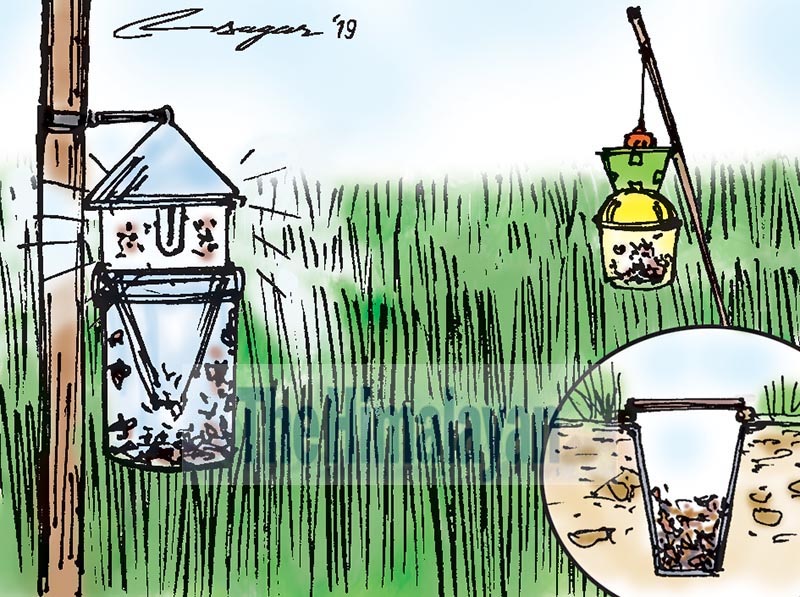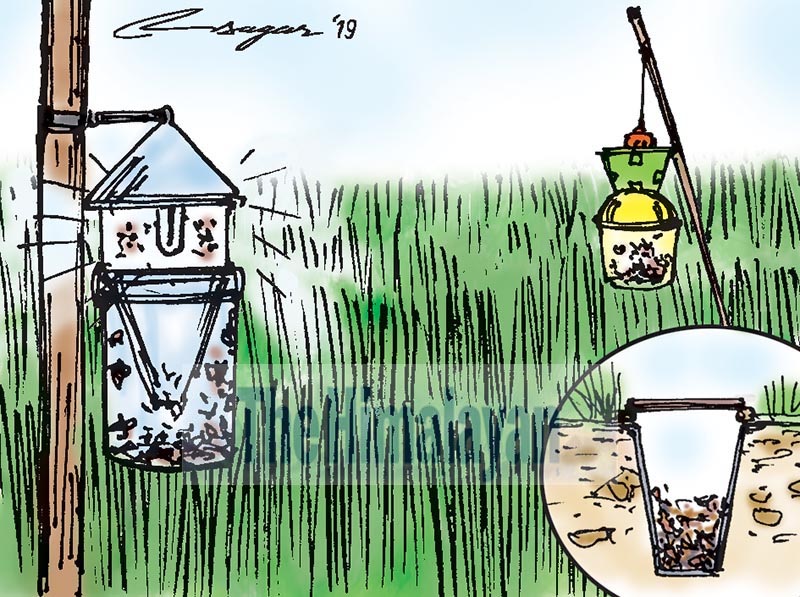Pest management: Alternatives to chemicals
In order to promote eco-friendly pest management in Nepal, the government has accorded high priority to it through its policies. There is good scope for producing plant-based pesticides, which may one day replace the need for chemical ones
The plant protection scenario in most developed and developing countries has undergone dramatic change. The emphasis has shifted from the use of hitherto dominant chemical pesticides to less and less toxic chemical pesticides and use of alternatives compounds. This was the notion under which the Integrated Pest Management (IPM) programme was invented. IPM saw its initial practice in the developed nations in the 70s and later entered Nepal in the 90s.

This eco-friendly approach offers an alternative to the mainstream pest management methods. Instead of seeing a blanket use of chemicals as the only option, it encompasses a range of pest management practices in a holistic and compatible manner so that one management option is not hostile to another option. Its credos are to make crops healthier and to make farmers and technicians experts in the field. Though it primarily emphasises the use of natural practices, it does consider using safer chemicals, but only as a last resort.
In pest management, there are many alternatives to chemical pesticides, such as mechanical, biological, quarantine and integrated methods. There are also specialised forms of traps, such as blue, yellow and standard light traps, pheromone traps, pitfall traps, all of which can be used in a lure and kill approach. Most of the insects are positive phototropic, with exceptions like the bed bug, which makes light traps extremely viable. In light traps, certain phototrophic insects, like the beetle and moth, are lured into conical sacks, where they are killed using chemicals on cotton swabs. Other traps, such as pheromone (substance released by insects) traps are used to attract male insects of the same species. This technique, also known as male annihilation technique, involves trapping the male species, leaving the eggs laid by the female insects to become sterile.
Science has also developed traps primarily used for monitoring purposes, which are useful in understanding pest biology and other such related phenomena. One such trap is the pitfall trap, which is used to monitor soil pests. However, the trap has a downside in that it can also trap useful insects such as rove beetles and ground beetles. Insect sex pheromones also have uses in pest management. These are chemicals used for signalling between members of the same species, which when released by one individual elicits a specific response in another of the species. In Nepal, Cue Lure, Trimed Lure and Methyl Eugenol are used to attract the male species of the cucurbit fruit fly, whereas Methyl Eugenol is used for the citrus fruit fly. Several other lures like Spodo Lure, Heli Lure, Bactrocera Lure and Lucine Lure are widely used in crop fields.
All of these are used along with a funnel shaped trap in which the mimic pheromone is released, which then lures the males into the trap. Unable to escape, it is killed inside the funnel when it makes into contact with pesticides on cotton swabs. Along with mass trapping, the pheromones can also be used for monitoring and the disruption of insect mating.
Botanical insecticides are naturally occurring chemicals (insect toxins) extracted or derived from plants or minerals. Neem (Azadirachta indica) is a type of evergreen tree popularly found in Nepal. Neem oil extract kills or repels many harmful insects and mites, including aphids, whiteflies, snails, nematodes, mealy bugs, cabbage worms, gnats, moths, cockroaches, flies, termites and mosquitoes, just to name a few. Neem can also act as a feeding deterrent against a number of insect pests. Treatment with neem-based pesticides imposes gustatory (taste) and anti-feedant effects on insects, leaving them with crippled and distorted wings. India has produced a number of neem-based products, such as Neemarin and Azadirachtin.
In Nepal, there is currently no way to synthetically formulate plant-based products, but a crude form of various substance has been used widely as per the perceived knowledge and practices of the farmer. They use extracts of nettle (Urtica dioica), agave (Agave americana), khirro (Sapium insigne), titepati (Artimisia vulgaris) and Ausro (Adhatoda visica) for pest control. These materials also have an anti-feedant effect, which either discourages or kills the insect as a result of loss in appetite.
In order to promote eco-friendly pest management in Nepal, the government has accorded it high priority through its policies, programmes and activities. The endeavour allows for capacity building of farmers and technicians through training and exposure visits. A greater degree of awareness and interest has also been created through various top level programmes.
With these programmes, farmers can not only enhance their technical know-how but also allow for the practical application of their knowledge. Consequently, the farmers in the programme area will be able to identify the plant materials that can be used for the development of pesticides, whilst also applying the relevant techniques to extract the ingredients themselves. Methods of application and assessment are also gradually improving with further research. All in all, there is good scope for producing plant-based pesticides, which may one day replace the need for chemical ones.
GC is Secretary, Ministry of Agriculture and Livestock Development






